Avoiding problems in ULTIM CHALLENGE
Published on January 23rd, 2024
(January 23, 2024; Day 17) – While Charles Caudrelier on the 32m Maxi Edmond de Rothschild has demonstrated his offshore mastery by leading the ARKEA ULTIM CHALLENGE-Brest, he has benefited in this solo, non-stop round the world race from the hardships across the fleet. Here is the position report:
1. Charles Caudrelier (FRA), Maxi Edmond de Rothschild (2017 Verdier 32/23)
No reported issues.
2. Thomas Coville (FRA), Sodebo Ultim 3 (2019 VPLP/others 32/23)
Damage on January 17 to starboard foil lowering system but anticipates it can be fixed without stopping.
3. Armel Le Cléac’h (FRA), Maxi Banque Populaire XI (2021 VPLP 32/23)
Completed on January 16 a 27-hour pitstop in Recife, Brazil to repair bow pulpit and correct an issue with the hydraulics on the starboard foil.
4. Anthony Marchand (FRA), Actual Ultim 3 (2015 VPLP 30/22)
Collision on January 23 damaged port foil. UPDATE: Marchand initially was not planning to stop but confirmed on January 24 that he will head some 400 miles north to Cape Town after the situation worsened.
5. Tom Laperche (FRA), Trimaran SVR-Lazartigue (2021 VPLP 32/23)
Damage on January 18 when daggerboard in the main hull collided with an UFO (unidentified floating object). Arrived to Cape Town on January 22 for repairs.
6. Éric Péron (FRA), Trimaran Adagio (2014 VPLP 31/21)
Slowed progress as only entrant without foiling appendages
The top four solo skipper are in the Indian Ocean which Coville considers the ocean he fears the most:
“It is the ocean that mixes more different air masses. First, there is the cold air mass of Antarctica along the line between Cape Town and Cape Horn. On the other hand, there is the warm air that comes down from Africa, Madagascar, and Reunion. We must go along this corridor affected by masses which are very different, which meet and generate violent and sometimes very erratic phenomena. Sometimes it takes different measures of opportunity, talent, and luck like Charles has to cross the Indian Ocean, remaining at the front of one front which was generated in South America….. but this is very rare. That doesn’t make us give up, we all know how long this course is!”
Details: https://arkeaultimchallengebrest.com/en
The Ultim Class trimarans have a maximum length of 32 meters and a maximum width of 23 meters.
The solo speed record around the world was set in 2017 by François Gabart (FRA) on the 30m Macif trimaran in a time of 42d 14h 40m 15s for an average speed of 21.08 knots. This yacht has been rebranded and will be raced by Marchand.
Entrants:
• Charles Caudrelier (FRA), Maxi Edmond de Rothschild (2017 Verdier 32/23)
• Thomas Coville (FRA), Sodebo Ultim 3 (2019 VPLP/others 32/23)
• Tom Laperche (FRA), Trimaran SVR-Lazartigue (2021 VPLP 32/23)
• Armel Le Cléac’h (FRA), Maxi Banque Populaire XI (2021 VPLP 32/23)
• Anthony Marchand (FRA), Actual Ultim 3 (2015 VPLP 30/22)
• Éric Péron (FRA), Trimaran Adagio (2014 VPLP 31/21)*
* Only entrant without foiling appendages
Five rules from the Sailing Instructions:
• The start line is kept open for 168 hours and the finish line is closed after an elapsed time of 100 days after the start time, that is to say 16th April 2024.
• The skippers can communicate and exchange with their teams on shore, so they have the freedom to get weather information and be routed by their team on shore and get technical help and advice to help with technical problems.
• The solo skippers can stop but there are two distinct operations. A technical stop is unassisted and requires the sailor to drop anchor, take a mooring, or tie up alongside an anchored or moored boat with no external help. There is no time penalty for a technical stop. But for a technical stopover (escale technique) where one or more crew or technical team come on board to help, there is a mandatory 24 hours minimum. This does not apply to the start port of Brest where all means are authorized to reach or leave the port within a radius of 50 miles.
• For the first time in ocean racing, zones where there are known to be a high concentration of whales and sea mammals are determined. Establishing these zones should both protect the marine wildlife and reduce the chance of a collision. These zones are around the Azores, the Canaries, south of South Africa, the Kerguelens, and parts of the Antarctic.
• There are ice exclusion zones to protect the skippers and their boats.


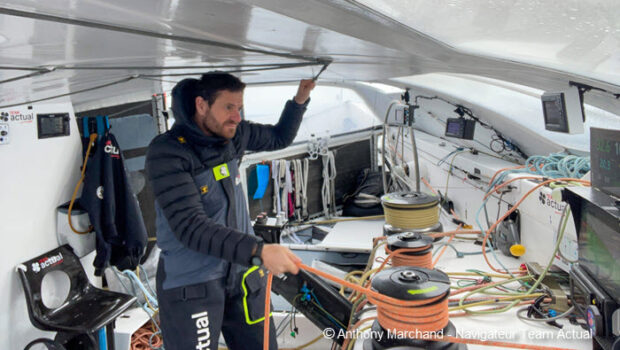


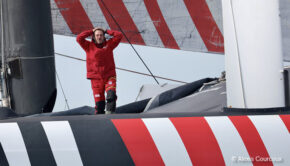
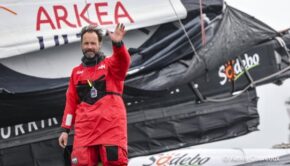
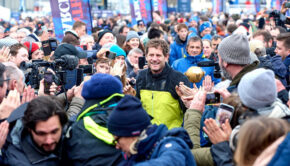
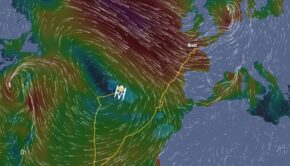
 We’ll keep your information safe.
We’ll keep your information safe.